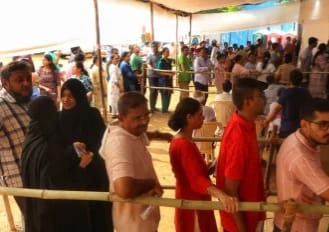21 May 2024: As Maharashtra concludes its multi-phase Lok Sabha elections, the political landscape remains charged with anticipation, with several key groups poised to sway the results. Amidst simmering tensions over quotas, shifting party loyalties, and strategic alliances, the electoral dynamics hinge on the influence of five pivotal groups: the Marathas, OBCs, Muslims, Dalits, and tribals.
Marathas: With a significant portion of the state’s population, Marathas have been vocal in their demands for reservations, culminating in protests and hunger strikes. The Maratha-OBC polarization, particularly in the Marathwada region, underscores the community’s political significance.
OBCs: Counter-polarization among OBCs, fearing the dilution of their existing quotas, has emerged in response to the Maratha reservation agitation. Representing over half of Maharashtra’s population, OBCs wield substantial influence across various regions, with leaders rallying against perceived threats to their reservation status.
Dalits: Concentrated in specific constituencies and comprising a substantial voter base, Dalits remain a crucial demographic in Maharashtra’s electoral calculus. The targeting of Dalits during the campaign, coupled with concerns over constitutional threats, has heightened political sensitivities within the community.
Muslims: In a significant departure from traditional alliances, Muslims have aligned with a Thackeray family member for the first time, reflecting shifting political dynamics. With sizable populations in key constituencies, their voting patterns are expected to play a decisive role in shaping electoral outcomes.
Tribals: Constituting a notable portion of Maharashtra’s population, tribals hold sway in reserved constituencies and wield influence in regions beyond. With reserved seats and Dhangar vote banks in focus, their voting preferences could tip the electoral balance in certain constituencies.
As Maharashtra awaits the election results, the intricate interplay of these influential groups underscores the complexity of the state’s political landscape. With each group wielding its own set of concerns and aspirations, the electoral outcome is poised to reflect the nuanced dynamics shaping Maharashtra’s socio-political fabric.




